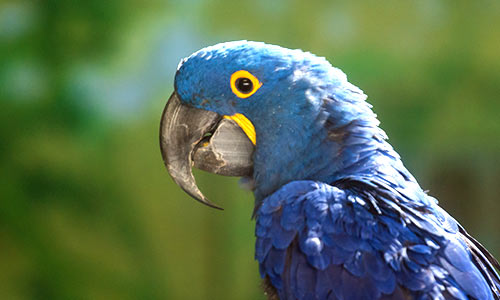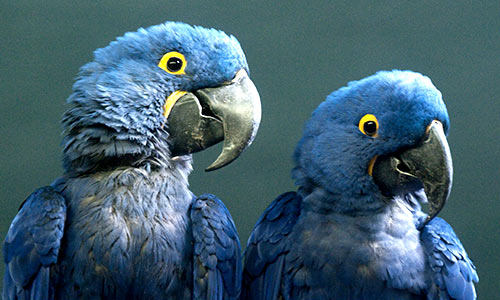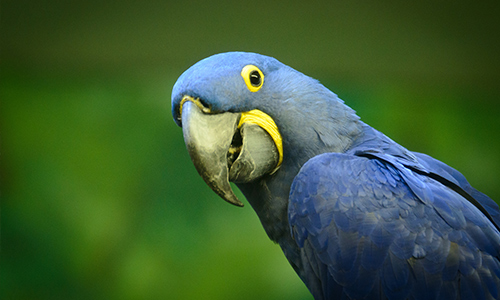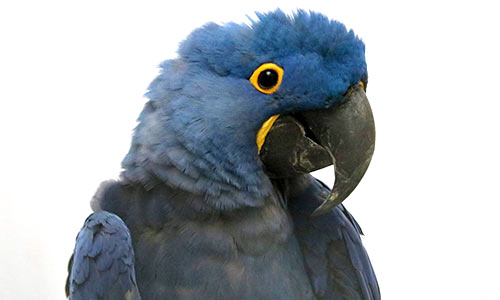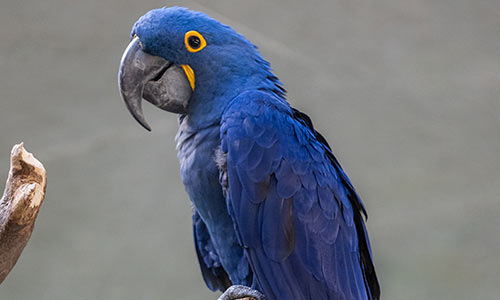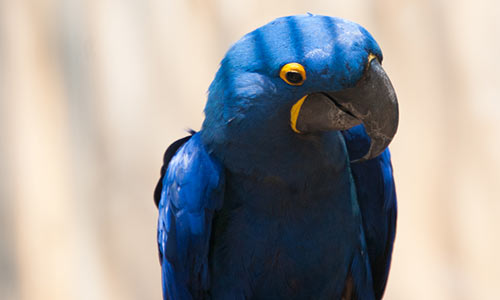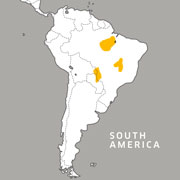Appearance:
Hyacinth macaws are the largest of all parrots. They are a uniform ultramarine blue, which appears as a rich and glossy color on their feathers. They have a small ring around the eye and around the base of the lower mandible which are bare, revealing prominent rich yellow skin. They have short, sturdy legs, which are useful for hanging sideways and upside-down. Their beak is massive, black and hooked, and it's used as a "third foot" to grasp onto trees when climbing. These powerful beaks can easily crack nuts and seeds, while their dry, scaly tongues have a bone inside them that acts as an effective tool for tapping into fruits.
Size:
- Length: 37.5-39.5 inches (half of this length is tail)
- Weight: 3.5 pounds
- Wingspan: approximately 4 feet
Diet:
Nuts, fruits, seeds, insects and grains. These birds play an important role in their ecosystem by dispersing seeds and nuts throughout their territory.
Behavior:
These birds emit harsh guttural calls when alarmed. Macaws are social birds that often gather in flocks of 10 to 30 individuals. They're most active from morning to mid-afternoon and fly in groups of two to eight to and from their feeding grounds. Flocks sleep in trees at night, and in the morning they may fly long distances to feed on fruit, nuts, insects and snails.
Reproduction:
Hyacinth macaws are monogamous, usually remaining with one partner for their entire life. Each breeding season, the wild population of hyacinth macaws form around 100 breeding pairs. From those 100 pairs, around seven to 25 offspring are produced per year. These birds breed mostly between November and April during the wet season, and they lay one or two eggs per season.
During incubation the female spends about 70 percent of her time with the eggs and is fed by the male. Eggs hatch after 25 to 28 days of incubation, and hatchlings fledge after 13 weeks. Fledglings are independent after 18 months. Both males and females are sexually mature at six to ten years of age.
Median Life Expectancy:
Hyancinth macaws can live up to 50 years in the wild.
Habitat/Range:
Hyancinth macaws prefer semi-open habitats and can usually be found in forests which have a dry season that prevents the growth of extensive, tall, closed-canopy tropical forest. Macaws also live in a variety of habitats, including deciduous woodland, cerrado and palm groves, and the palm-Savannas of the Pantanal.

